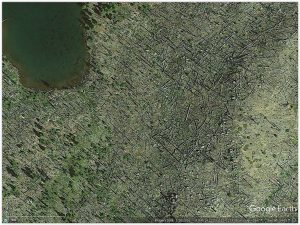News from the other half of the country:
A controversial project slated for Hoosier National Forest underscores a larger struggle percolating over America’s trees.
Excerpts:
Inside the heart of Hoosier National Forest, the last truly wild place in Indiana, a deep chasm has formed – between longtime area residents like Heinrich, environmental advocates, and U.S. Forest Service managers – over the proposed Buffalo Springs Restoration Project.
Forest Service leaders maintain that burning, cutting, and spraying thousands of acres of mature trees is necessary to preserve the forest’s “overall health.” They say it will protect the wilderness near Patoka Lake in southern Indiana from the impending stressors of climate change.
…
The project would further a larger U.S. Forest Service initiative to sustain oak-hickory ecosystems in the forest, which they said are “important to keep…on the landscape as many wildlife species have evolved with it and depend on it.”
…
“Our forest is all pretty much the same age. We call it even-aged. That’s not good to have trees that are all the same age, because they’re all going to get old together. Which isn’t a bad thing in some part of the forest, but you want to have that diversity. You want to have those younger trees coming on too,” Thornton said.
But several environmental advocacy groups, including the Indiana Forest Alliance, Sierra Club, Protect Our Forest, Save Hoosier National Forest and the Hoosier Environmental Council, believe the Forest Service is making a mistake.
They maintain the Forest Service is operating within an archaic framework that profoundly – and erroneously – simplifies the makeup of a complex forest system, and that the real reason the Forest Service is moving forward with the Buffalo Springs Restoration Project is because they want to auction off its most valuable trees for profit.
